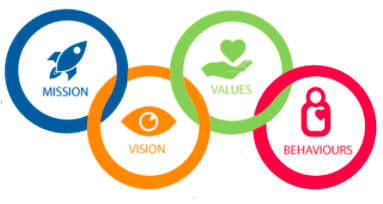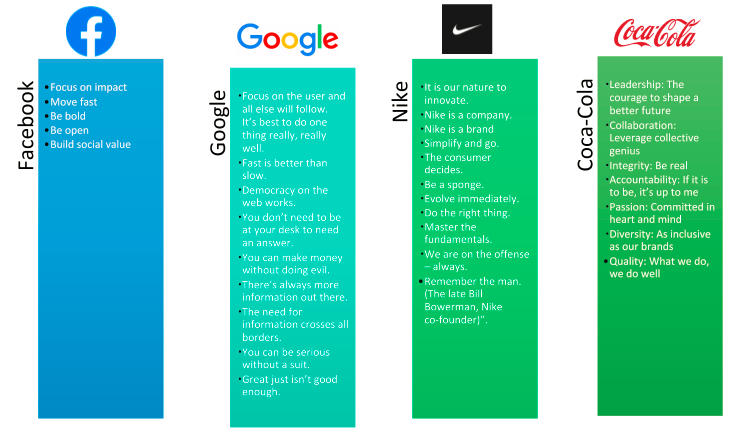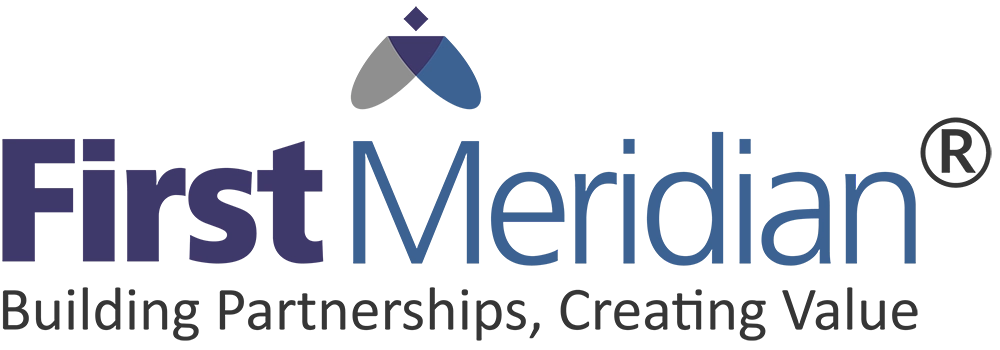Every business is built on a foundation of organisational values, a set of guiding principles that not only helps to achieve its goals, but which epitomize the very purpose of the organisation’s existence.
While these values are highlighted and reinforced at every possible opportunity, it’s often unclear how many employees indeed imbibe the value system. How do we, as business leaders or team leaders ensure that our team members understand and are aligned with our organization’s core values? Let’s delve into this briefly.
Every Business is Built on a Fundamental Belief System

What are organisational values? In simple terms, organizational values are but fundamental beliefs that govern the business. Combinedly, they form a guiding principle to manage internal and external relationships and influence the selection and evaluation of decisions and actions throughout every step of the journey in the business. As a traditional practice, organisational values, once stated, are carved in stone and must be followed unwaveringly. This might have worked well in the earlier days when change was comparatively slower. However, Industry 4.0 demands accelerated change as innovation and technology continue to disrupt all areas of work. It therefore stands to reason that organizational values too need to be relooked periodically. William Craig, the founder and president of WebFX, says "You don’t have to throw your company’s values, guidelines or handbooks in the trash every year, but your teams and even your whole organization should include employees in reframing the language used, intentions and goals from time to time." Let’s look at some great organisational values set by some of the leading brands in the world today.

[Source: 190 Brilliant Examples of Company Values]
Organisational values often help the leaders as well as employees decide on a course of action in any given situation. For instance, one of Google’s values states "You don’t need to be at your desk to need an answer." This directly translates into to their act of pioneering new technologies and offering new solutions for mobile services that help people across the globe to perform several routine as well as complex computing tasks on the go. Imagine how a global giant like Google has managed to maintain a value-based culture, despite its size, reach and diversity. Google’s leadership team acknowledges that their company’s culture is fundamentally tied to neither their revenues nor their mission statement. It is purely a reflection of the values that the people across hierarchies within Google hold dear.
Cascading Values
Now, how can you ensure that you have a solid foundation of values that seep through hierarchies, inspire people and drive the course of your business?
1. List down the values that are unique to your organization:
First and foremost, you must set or reset the organizational values. It is imperative to list down values that are distinct to your organization. Most organizations end up using the same words that are commonly used and hence have achieved the status of a “jargon.” Denise Lee Yohn, author of “What Great Brands Do” says in an article that to identify what your core values should be, you should start by thinking about your business category. She adds that Coca-Cola does have collaboration, a commonly used term, as one of its values, but it goes on to describe it as “leverage collective genius”, thus making it unique.
If you get this part correct, you should be able to come up with a set of values that can directly translate into specific actions and decisions the employees should make in any given situation.
2. Communicate, communicate and communicate:
“Value setting is a tough business, often fraught with multiple challenges and divergent agendas. But once those values are set, right or wrong, every CEO would be wise to communicate them and live them as though their business depends on it. Because it just might.”
— Rosanna M. Fiske, immediate past chair of Public Relations Society of America (PRSA).
Communicating the values you have set is not a one-time activity but is continuous, and the messaging must be explicit and repeated across multiple communication channels (meetings, newsletters, orientations, onboarding, trainings, remote collaboration tools, etc., and even as part of office décor). For global entities and organisations seeking to expand their reach beyond local geographies, values must be communicated in a way that transcends cultures and nationalities. Extreme care must be taken to ensure that the message does not get lost in translation.
3. Recruit and retain for values:
Laszlo Block, former Sr. VP of People Operations at Google Inc. says in his book Work Rules!: Insights from Inside Google That Will Transform How You Live and Lead, that the main criteria for recruitment in Google was not GPAs or education levels, but the focus was on people who are fun, intellectually humble, conscientious and comfortable dealing with the unknown.
A values-based recruitment model puts organizational fit at the forefront of your hiring process and gives the applicant an idea about the compatibility of their personal values with that of the organization. Continue hiring using this philosophy and eventually all of your workforce will resonate the same principles and applications in their work.
Furthermore, establish a performance review process that also assesses how your employees integrate organizational values in their jobs. Like other performance areas, this too must be scrutinized, and if the employee’s value alignment levels are abysmally low, you might need to rigorously train them in this regard.
4. Recognize and reward value-centric behavior
The 2018 SHRM/Globoforce Employee Recognition Survey reveals that values-based recognition remains highest rated among HR leaders who adopt these programs to reinforce and drive business goals. The report further states that:
Values-based recognition programs that recognize and reward employees for exhibiting behaviour that demonstrates organisational values, are seeing 70% adoption as compared to recognition programs not tied to organisational values (30%).
R&R programs tied to values are also:
- Twice as likely to focus on reinforcing and driving business goals
- 33% more likely to focus on empowering employees, and
- 29% more likely to focus on creating a positive employer brand
Encouraging employees to merge organizational values with everyday behaviours and recognizing these behaviours is a sure-fire way to ensure better retention and higher employee engagement, while achieving maximum adherence to your organisation’s core values.
It All Comes Down to the Leaders
It is imperative that leaders live and lead by example. Truth be told, if the leader fails to abide by organizational values, no amount of training or employee engagement can build a value-centric business. Organizations that leverage on leaders to communicate consistently throughout hierarchies, recruit and retain for values and recognize value-centric behaviours tend to have a healthier workplace culture and result in superior business performance.
“Core values get seeded and nurtured in organizations by what its leadership does or does not. Demonstration is the most effective form of leadership communication.”
– Madhu Madhavan, Founder and CEO, Qsutra







